Sliced Frames
- Work Creative Fields Architecture, Unbuilt
- Project Type Design Studio
- Publication -
- Project Date Spring 2012
Prologue
Both architecture and culinary arts have commonly relied on 2-dimensional materials for representation. Everyday, we are often bombarded by advertisements of food. Recipes, digital or printed, are often accompanied by an image of the prepared food, as a testimony to the written instruction. Restaurant promotions, supermarket flyers, cookware advertisements…all inundated with beautiful images of food, even when the enterprises have a weak or indirect connection to the delivery of the food presented. And in architecture, as Robin Evans reminds us, “Architects do not make buildings; they make drawings of buildings.” Architects express and communicate ideas and visions with drawings and images. While that seem necessary and unavoidable for unbuilt environments, architects also rely on 2-dimensional images—often intentionally composed and manipulated, just as food advertisements are staged—to tell and receive stories of built spaces and environments. Countless publications fill architects’ visual fields with fantastic images. But we must remember, drawings and images are visions; they do not transcend the actual experience, for both culinary arts and architecture. The final deliverables of both professions are, after all, not flat! We do not eat a poster of a Big Mac, or live in a drawing of a house.
So when given a chance to design a culinary school from scratch—a marriage of the two professions, what form will it take? How will the professions, now under the influence of each other, re-interpret the 2-dimensional plane?
Culinary Arts and Architecture had come together previously to challenge the 2-dimensional plane. It could be seen in still life paintings of the Dutch Golden Age, where the subjects were often food, and the artists meticulously painted the objects and the environment they were in to create the optical illusion that the objects exist in three-dimension. However, this is not a viable strategy for a culinary school, when an actual space is the deliverable.
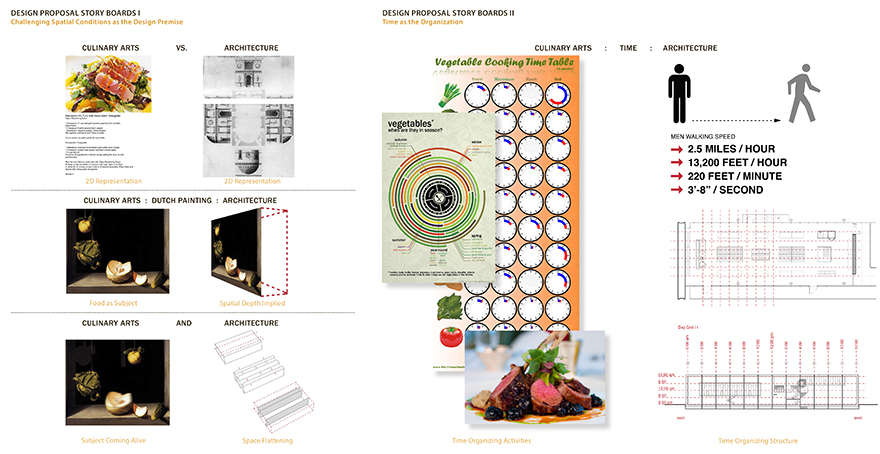
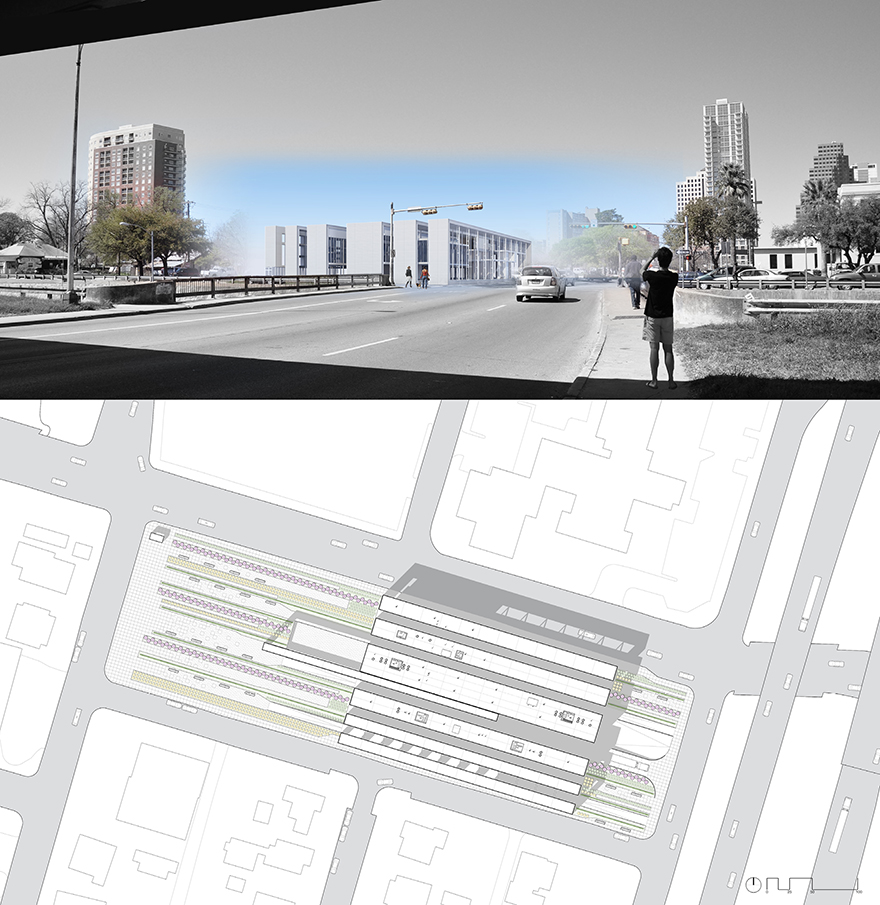
The Proposition
My proposal for this culinary school calls for a new reconciliation between the 2-dimensional representations and 3-dimensional actualities of the professions. I propose the two professions to challenge the 2-dimensional plane inversely, base on the premise of the Dutch paintings. In this project, the culinary arts activate the flat, fixed plane by introducing motion; kitchens are opened up for maximum transparency and exposure. The artifacts and activities associate with food—the subjects of this still life—are no longer static and they occupy spaces. On the other hand, the architecture, operating from the opposite direction, strives to compress its 3-dimensional volume to the bare minimum, as if it is trying to return back into a drawing. The architecture takes an ideological opposition to the Dutch still life painting, in another word, the backdrop, the stage, for this still life painting wants to be flat, look flat. To restate, what becomes 2-dimensional in the paintings returns to 3-dimensional in the composition of the culinary school, and what appears to be 3-dimensional in the paintings strive to be 2-dimensional in the spatial organization of the culinary school.
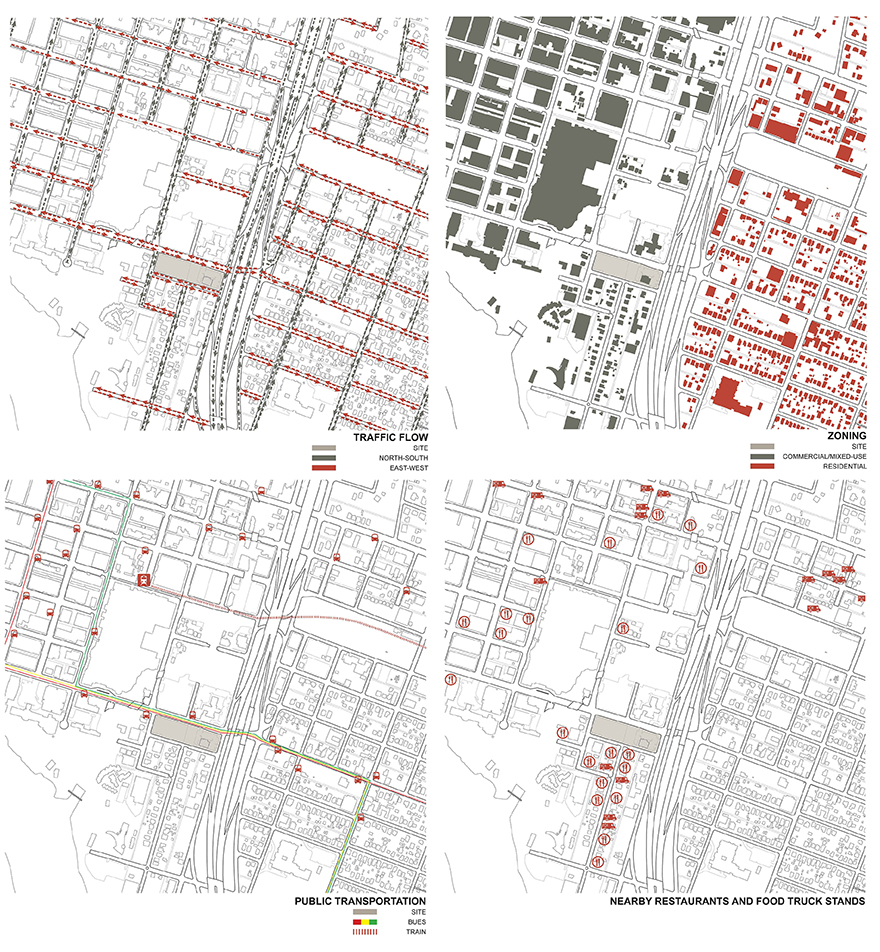
The Strategy
After I have identified my “ingredients”—motion and space, I set out to develop a set of “instructions” for my recipe for the “making” of the culinary school. Naturally, at the intersection of this proposed spatial expansion and contraction, a fourth dimension is materialized—the dimension of time. Time allows me to unify and organize the two professions in a school setting; one sets the motion, the other takes the form—one follows a time table, the other sets the time table; both operate in the unit of time. The program is organized on a “1-second” grid, base on a 3’-8” increment that is derived from average human walking speed. Furthermore, the program is sliced into autonomous volumes, composed within narrow steel structural frames, “shrink wrap” to the minimum dimensions required for the purpose of training kitchens and classrooms. The mostly lateral movement among the food storage, the prep sink, the cook station, and the worktable is accentuated in this linear plan, enabling me to compress the architectural volumes, further emphasizes the “flatness” of my composition. The sliced frames are deliberately pulled apart, connected only by glass bridges, to reveal the “thin” spaces. Window mullions and floor tiles follow the 1-second grid; hope to inspire students to discover rhythms in their own movement in and out of the kitchen. This time-grid organizes the entire site; it reads in seconds in plan, hours in elevations, and months in the landscape with seasonal plantings.
The Site
This isn’t just a school building; this project is an artistic adventure, a new typology of still life painting at a very large scale. This isn’t just about training new chefs; this is about enhancing and enriching local cultures. So when looking for a site to support my endeavor, I needed to look no further, I chose Austin. Austonians, with their love for outdoor-living and their appreciation for unconventional public art, I believe, will find this project resonates with their local cultural values. The site for the building is located at the southeast edge of downtown, a block east of the Convention Center; bounded on the west by nearby high-rises and immediately on the east by one of the city’s arteries, Highway I-35. The site is also at a critical threshold between the East and West of Austin. The culinary school will service as a connector that unifies the socially and economically divided city, providing a ‘common ground’ for prosperity. After all, who can say no to good food?! In addition, the culinary school will be visible from I-35 as people drive to and from the city; it is the gatekeeper to the city, a landmark to the city, the Eiffel Tower of Austin.
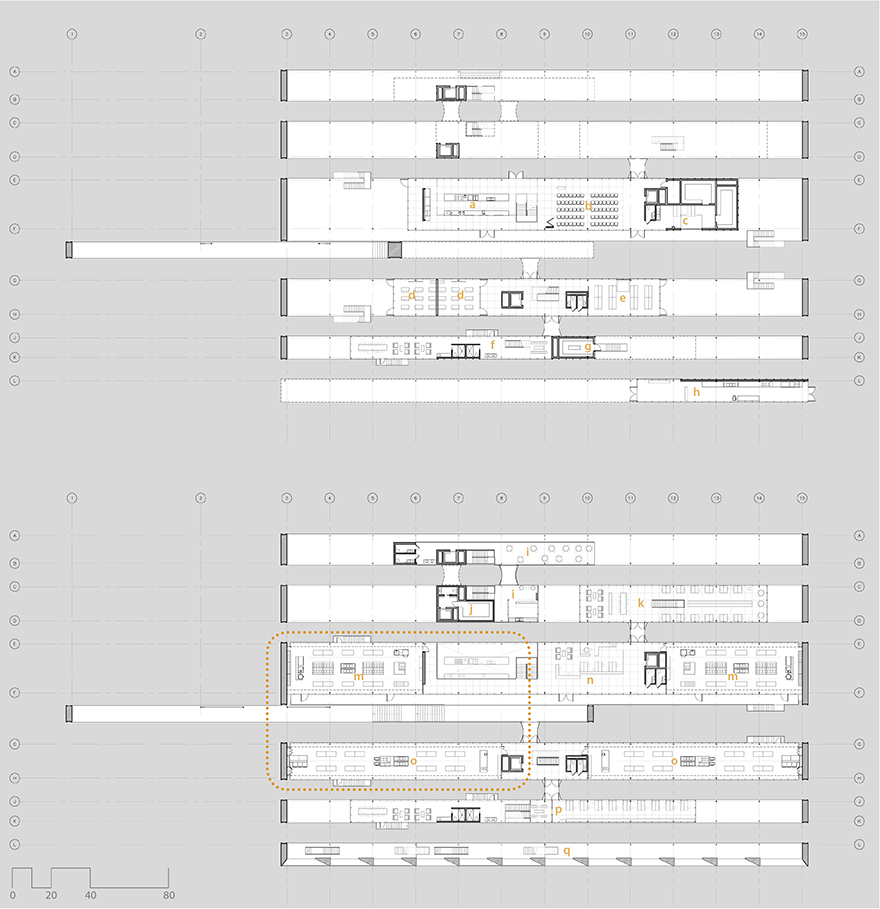
Top: Lower Level Plan: (a) Demonstration Room, (b) Lecture Hall, (c) “Wet” Pantry and Storage, (d) Class Rooms, (e) “Dry” Pantry and Storage, (f) Faculty Lounge and Locker, (g) Wine Room, and (h) Bakery.
Bottom: Second Level Plan: (i) Restaurant Outdoor Seating, (j) Restaurant Pantry, (k) Library and Student Lounge, (m) Cooking Classroom, (n) Reception, (o)Pastry Classroom, (p) Faculty Loung and Office, (q) Brise Soleil.
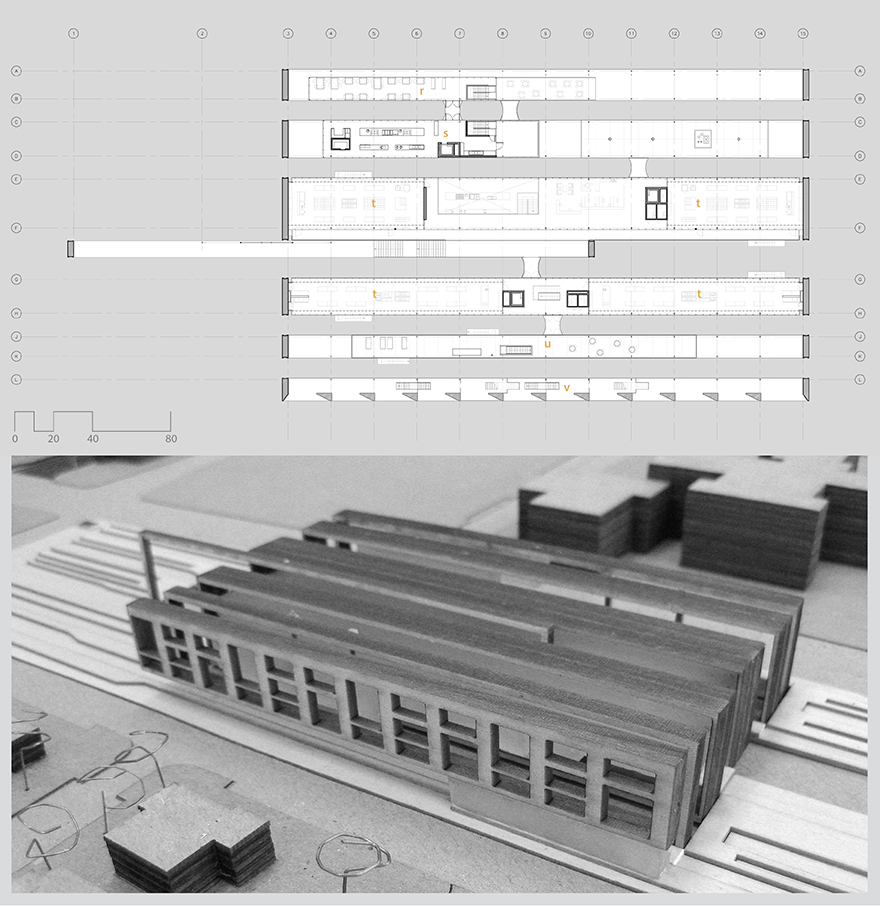
Top: Upper Level Plan: (r) Restaurant, (s) Restaurant Kitchen, (t) Mechanical Spaces Above Classrooms, (u) Faculty Lounge Terrace, (v) Brise Soleil
Bottom: Design Model, South Facade.
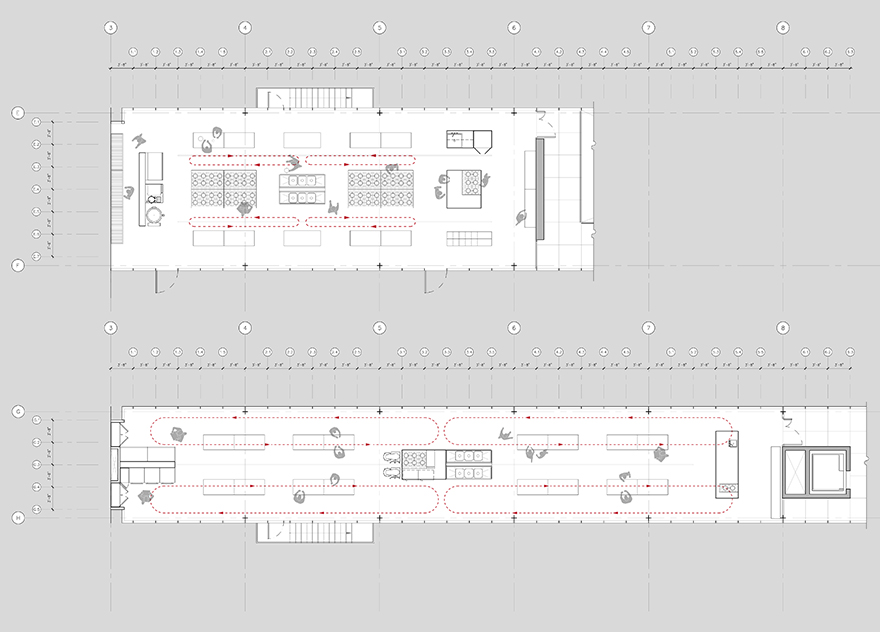
Enlarged Cooking and Pastry Classroom plans.
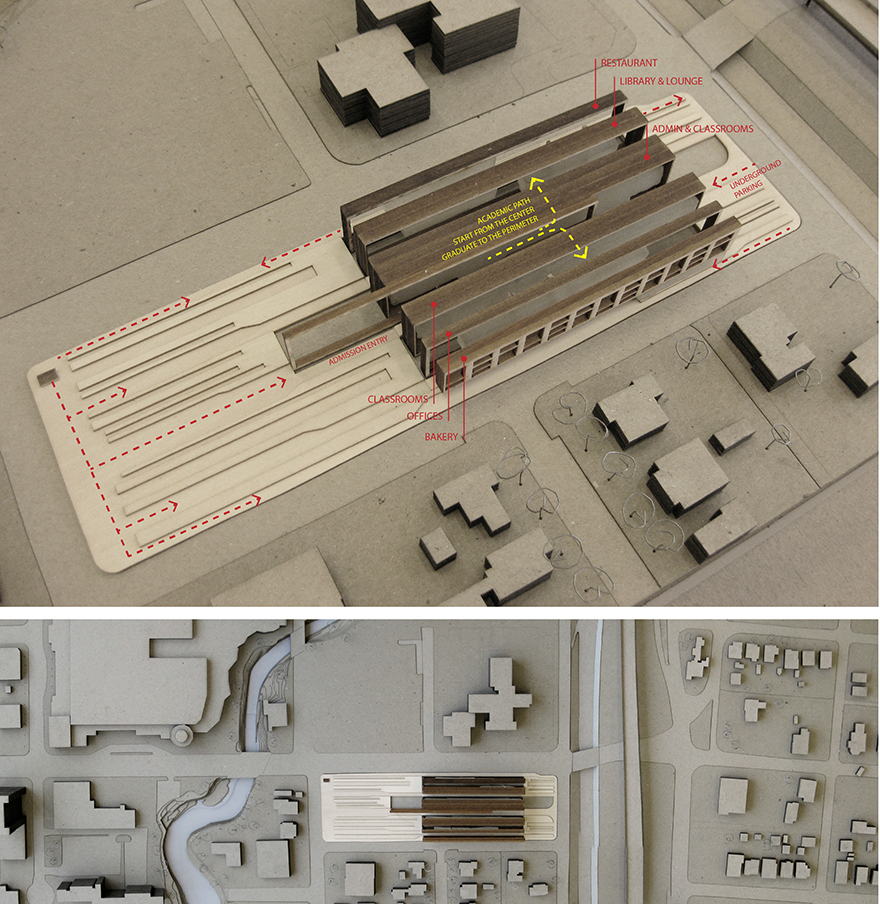
Massing Model and Diagram
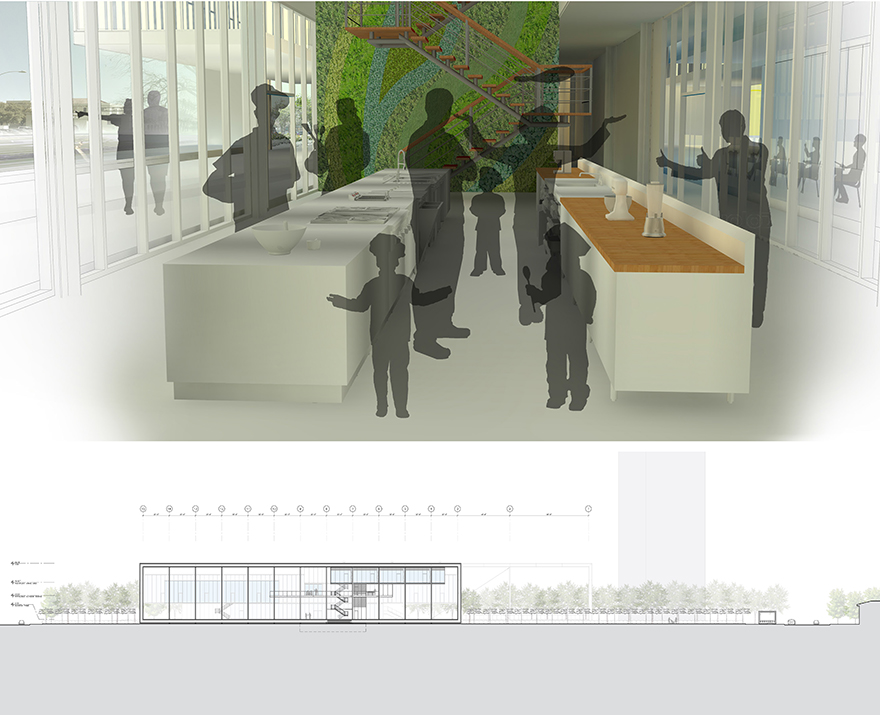
Top: Demonstration Kitchen interior during a weekend open house.
Bottom: North Elevation, showing first frame with suspended glass box for restaurant.
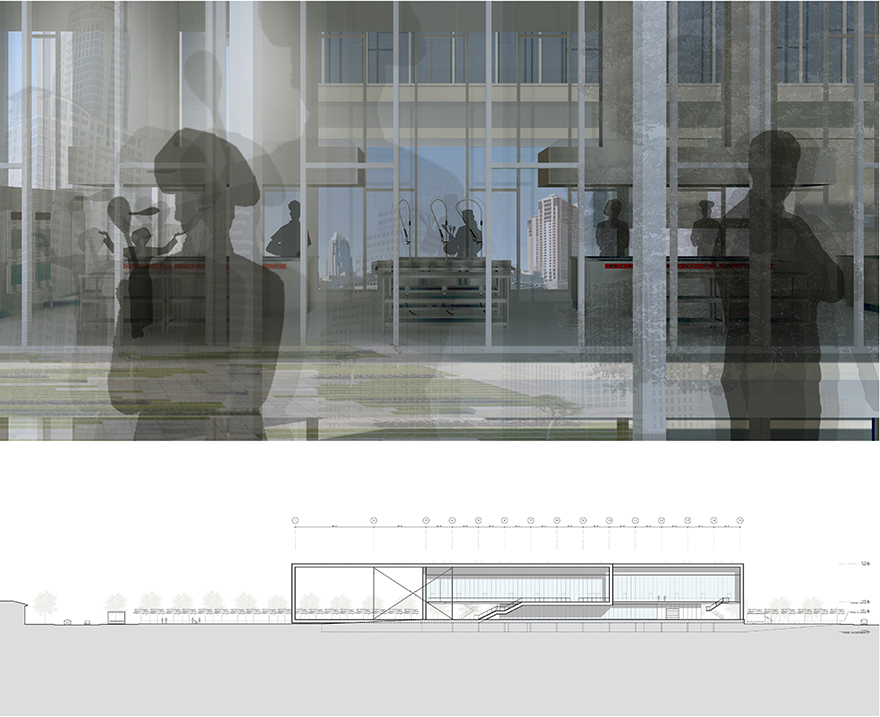
Top: View looking through classrooms in frame; the expansive glass walls reflect every aspect of the city back onto the building dynamic layers.
Bottom: Entry Frame Elevation.
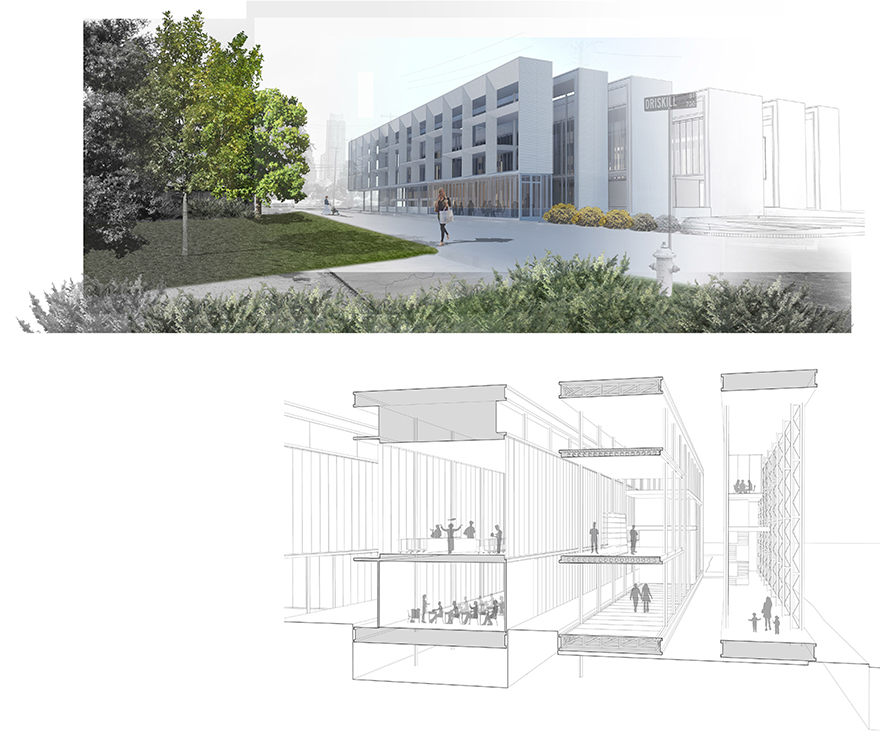
Top: South Facade facing Rainy Street. Sliced Frames wrap in perforated metal, futher emphasizes the lightness of the structure.
Bottom: North-South Section Perspective.
